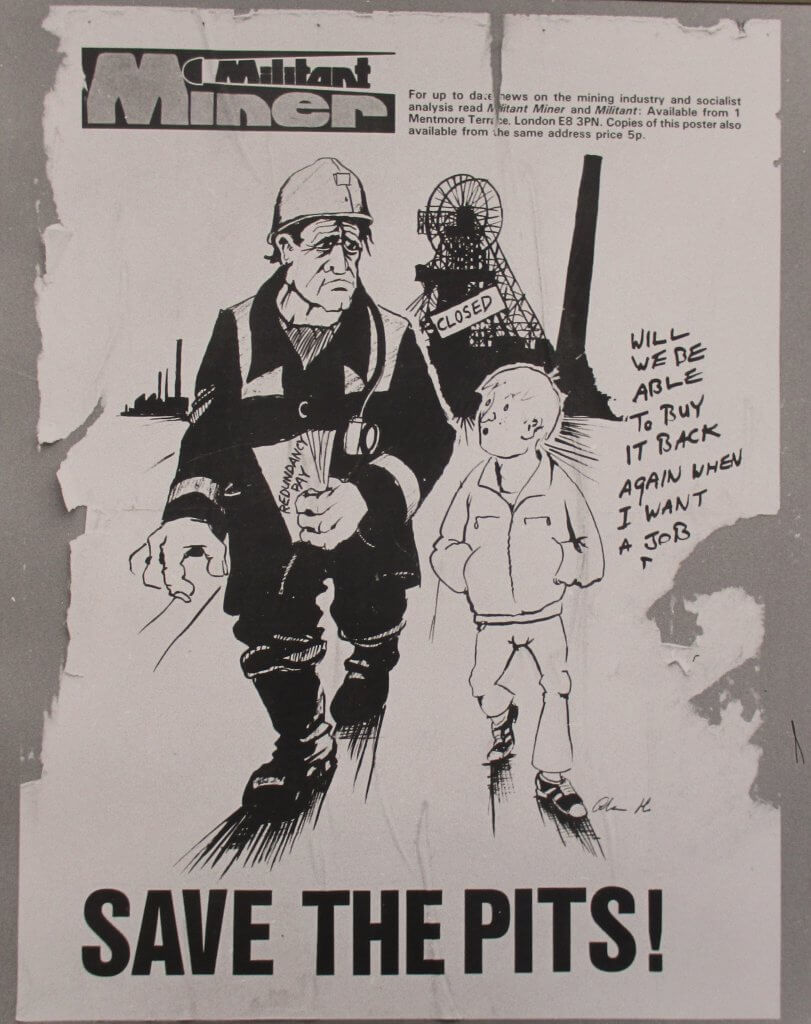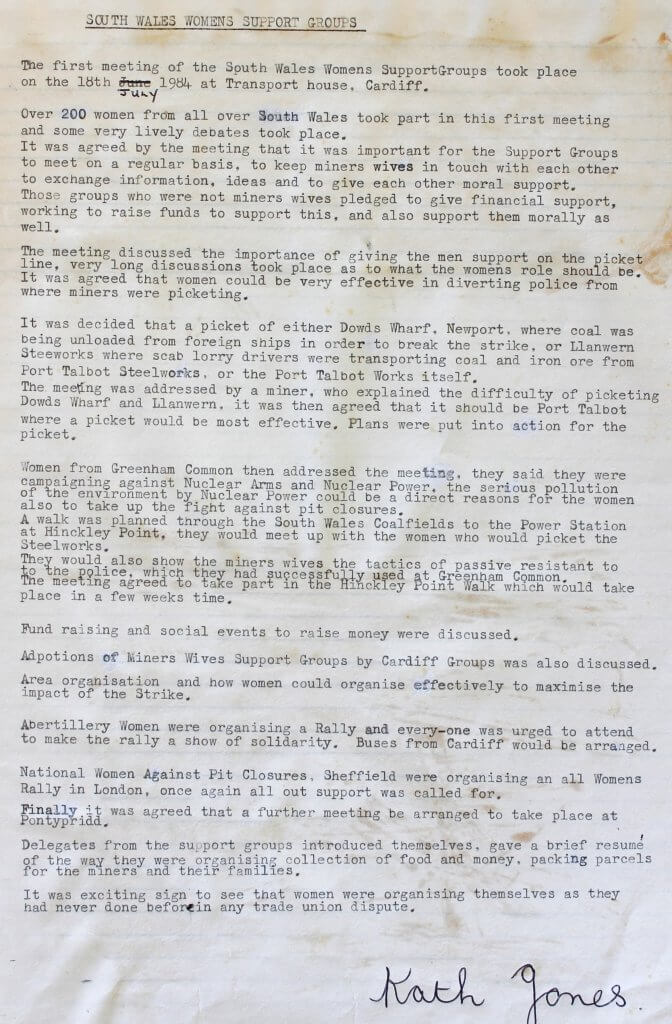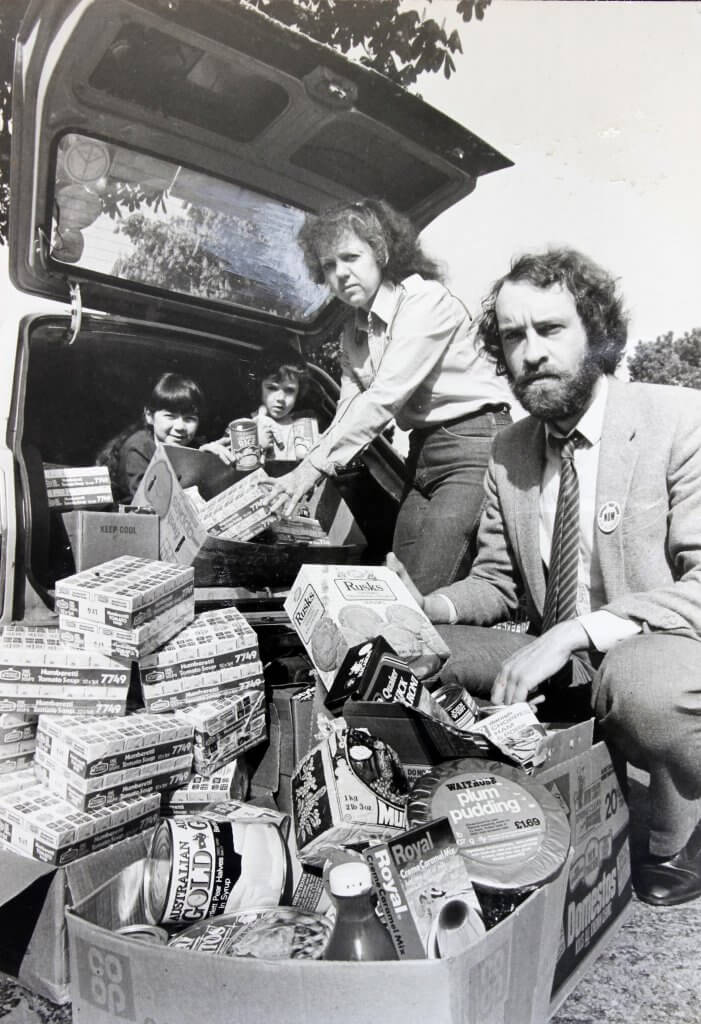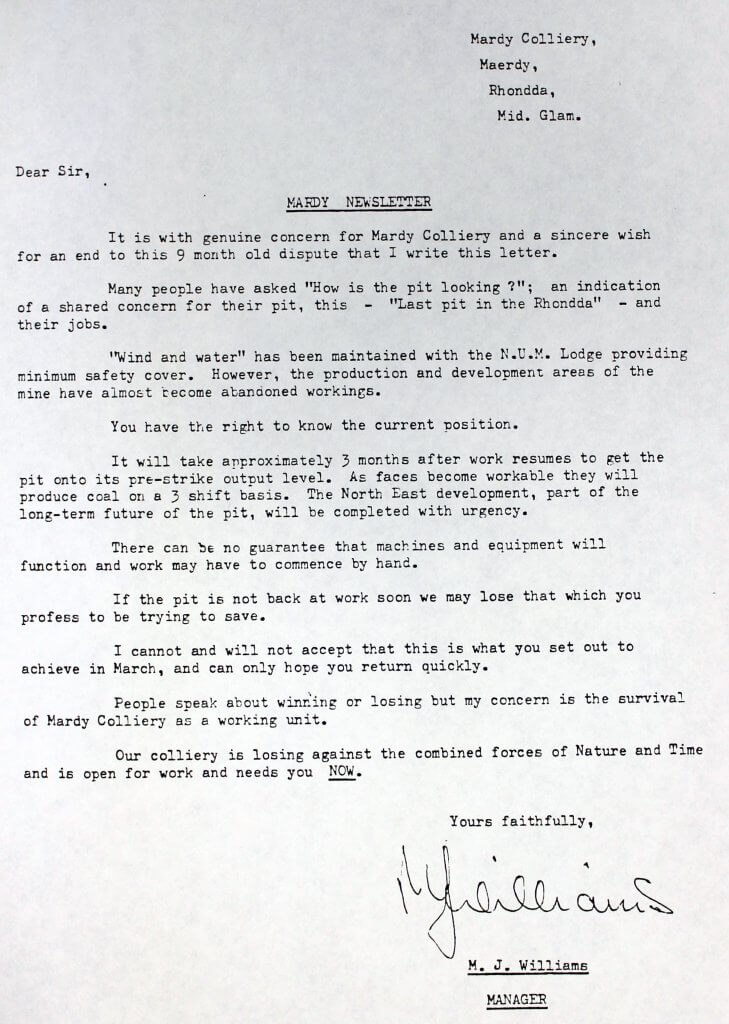Unlike the 1972 and 1974 strikes, which had been about wages, the issue for the miners in 1984 was the survival of their industry – Dr Ben Curtis
 Militant Miner poster, from a photograph by Leslie Price (D1544/5/10)
Militant Miner poster, from a photograph by Leslie Price (D1544/5/10)On 6 March 1984, the NCB announced that it intended to cut 4 million tons capacity and 20,000 jobs within the year. Miners across the UK went on strike to save the industry and their communities.
 Extract from minute book, South Wales Women's Support Group, 18 Jul 1984 (DWSG/2/1)
Extract from minute book, South Wales Women's Support Group, 18 Jul 1984 (DWSG/2/1)Women played a vital role in supporting the miners during the strike. In the minutes of the first South Wales Women’s Support Group meeting, Kath Jones wrote:
…[i]t was exciting […] to see that women were organising themselves as they had never done before in any trade union dispute.
 Penarth Labour Party members collecting groceries to help south Wales miners, 22 May 1984 (D1061/1/49)
Penarth Labour Party members collecting groceries to help south Wales miners, 22 May 1984 (D1061/1/49)The strike ended in defeat for the miners. Within ten months of the strike, nine collieries had disappeared in south Wales.
 Letter sent to miners at Mardy Colliery during strike, 1985 (DNCB/12/1/18)
Letter sent to miners at Mardy Colliery during strike, 1985 (DNCB/12/1/18)

